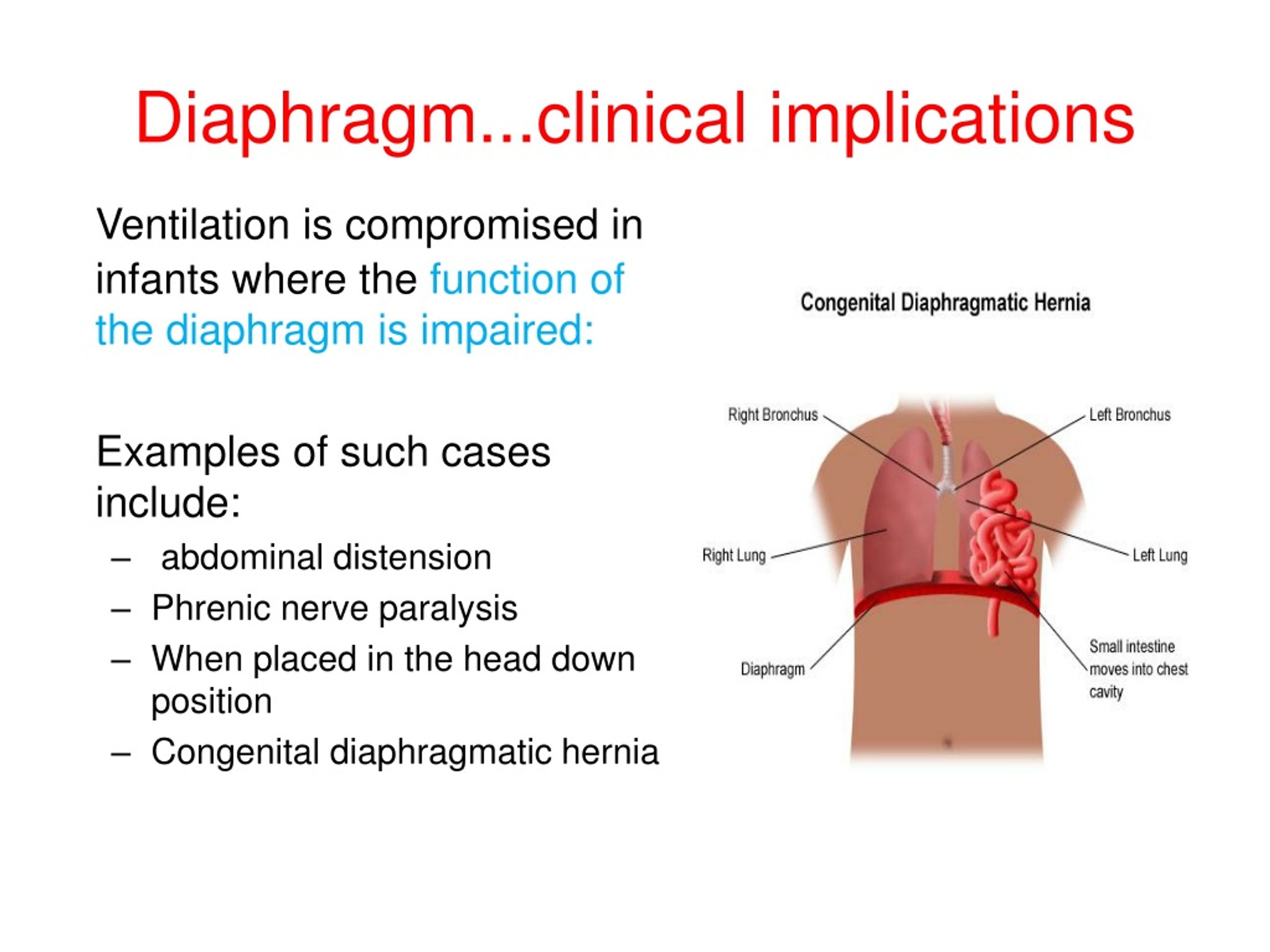Pain above Diaphragm: 10 Causes and How to Treat It
What are the causes of pain above the diaphragm? How can this type of pain be treated? Discover the 10 potential causes and effective treatment options.
Causes of Pain Above the Diaphragm
There are various potential causes of pain above the diaphragm, including:
1. Injury
Heavy impact or a surgical procedure can injure the diaphragm, leading to intermittent or constant pain. Severe trauma can even tear the diaphragm muscle, a condition called a ruptured diaphragm that requires surgical repair.
2. Musculoskeletal Problems
Trauma, twisting movements, and excessive coughing can strain the rib muscles, causing pain similar to diaphragm pain. Fractured or broken ribs can also produce similar symptoms. Treatment options include over-the-counter pain relievers, ice therapy, heat therapy, breathing exercises, and physical therapy.
3. Intense Activity
Strenuous physical activity that causes heavy breathing can lead to diaphragm spasms, resulting in sharp or tight pain that interferes with breathing. Taking a break from the activity until the spasms subside is recommended, and a proper warm-up routine may prevent this type of pain.

4. Gallbladder Disease
Pain from gallbladder conditions, such as inflammation, gallstones, bile duct blockage, or cancer, can feel similar to diaphragm pain. Other symptoms include changes in urinary or bowel habits, chills, fever, diarrhea, nausea, and jaundice. Treatment may involve medications, anti-inflammatory drugs, or surgery.
5. Hiatal Hernia
A hiatal hernia occurs when part of the upper stomach pushes through an opening in the diaphragm. Smaller hernias may not cause noticeable symptoms, but larger ones can lead to acid reflux, chest or stomach pain, difficulty swallowing, and other issues. Medication and lifestyle changes can help manage symptoms, while surgery may be necessary for severe cases.
6. Pregnancy
As the uterus expands during pregnancy, it can push the diaphragm upward, causing mild pain or discomfort and shortness of breath. These symptoms are generally not a cause for concern and will resolve after giving birth.
7. Pleurisy
Pleurisy, or inflammation of the pleura (the layer of tissue surrounding the lungs), can cause sharp chest pain when breathing and shortness of breath. This condition may be caused by viral or bacterial infections, autoimmune disorders, or other underlying conditions.

How to Treat Pain Above the Diaphragm
The treatment for pain above the diaphragm will depend on the underlying cause. Some common treatment options include:
Medications
Over-the-counter pain relievers, such as ibuprofen or naproxen, can help manage pain. Prescription medications may be necessary for more severe cases, such as those involving gallbladder disease or a hiatal hernia.
Lifestyle Changes
Adjustments to diet, exercise, and other lifestyle factors can help control symptoms. For example, losing weight, managing chronic conditions, quitting smoking, and limiting alcohol intake may be beneficial for gallbladder disease or hiatal hernia.
Physical Therapy
Breathing exercises and physical therapy can help strengthen the diaphragm and surrounding muscles, alleviating pain caused by musculoskeletal issues or intense activity.
Surgery
In some cases, such as a ruptured diaphragm or a large hiatal hernia, surgery may be necessary to repair the underlying problem and provide long-term relief.
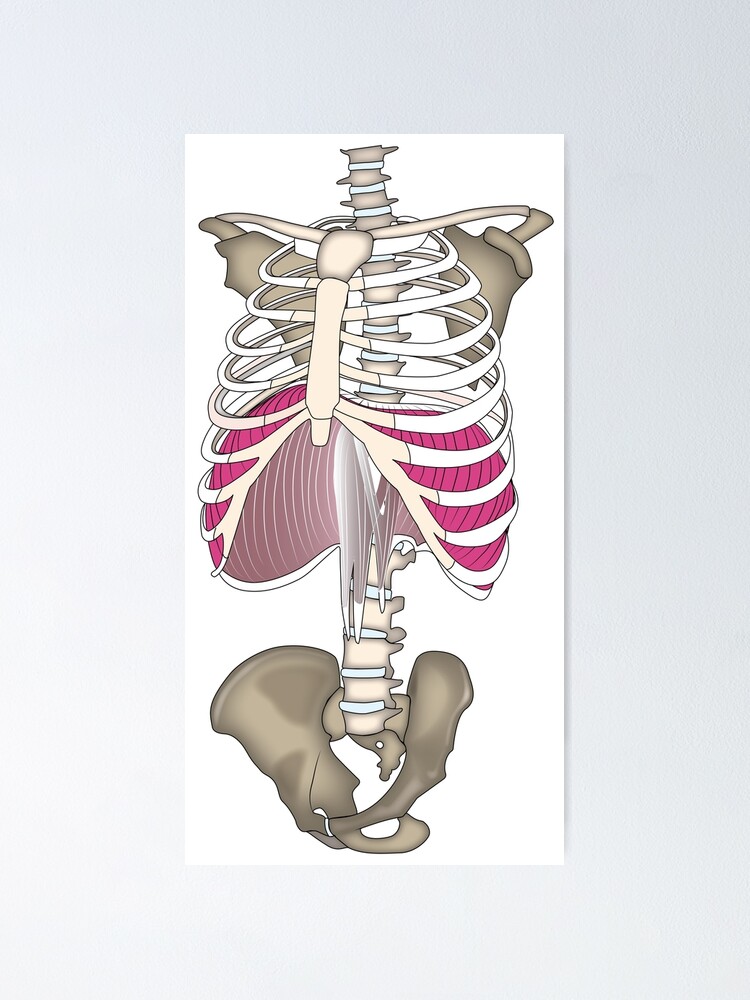
When to See a Doctor
If you are experiencing persistent or severe pain above the diaphragm, it is important to consult a healthcare professional for proper diagnosis and treatment. Seek immediate medical attention if the pain is accompanied by symptoms like difficulty breathing, chest pain, or severe abdominal pain.
Preventing Diaphragm Pain
While some causes of diaphragm pain, such as pregnancy or certain medical conditions, may not be preventable, there are steps you can take to reduce the risk of other types of diaphragm pain:
Maintain a Healthy Lifestyle
Maintaining a healthy weight, exercising regularly, and avoiding activities that could strain the diaphragm or rib muscles can help prevent issues like gallbladder disease, hiatal hernia, and musculoskeletal problems.
Practice Proper Technique
When engaging in physical activity, be sure to use proper form and technique to avoid straining the diaphragm. Warm up thoroughly before intense exercise to help prevent spasms.
Seek Medical Attention for Injuries
If you experience an injury to the chest or abdomen, it is important to seek medical attention promptly to ensure proper healing and prevent complications, such as a ruptured diaphragm.
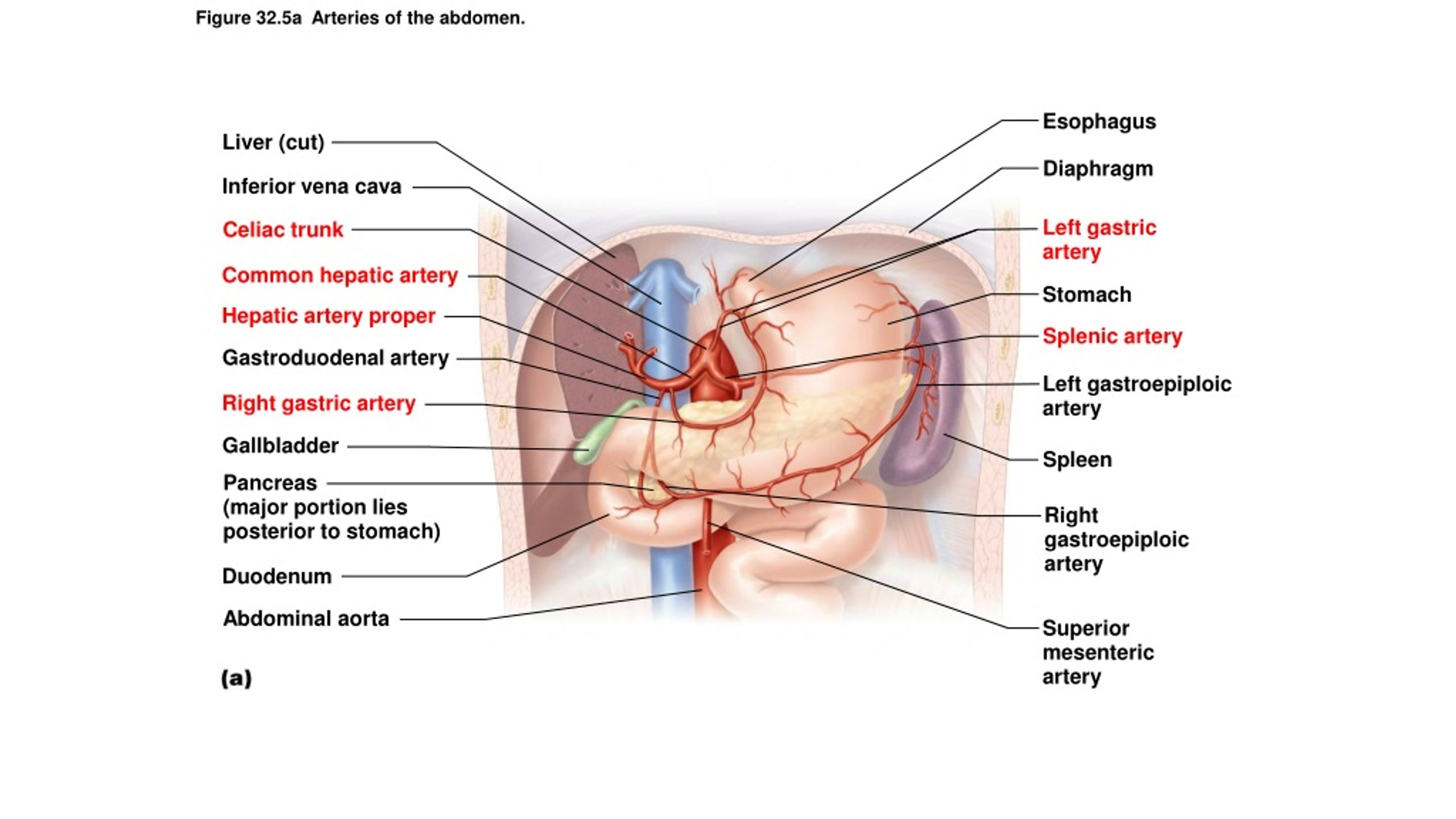
Conclusion
Pain above the diaphragm can have a variety of causes, ranging from injuries and musculoskeletal problems to underlying medical conditions. Understanding the potential causes and seeking appropriate treatment is essential for managing this type of pain effectively. By adopting a proactive approach to prevention and seeking medical care when necessary, individuals can take steps to minimize the impact of diaphragm pain and maintain their overall health and well-being.
10 causes and how to treat it
There are many potential causes of diaphragm pain, or pain that feels similar, including:
1. Injury
Heavy impact or a surgical procedure can injure the diaphragm. The resulting pain may be intermittent or constant.
Some types of trauma can tear the diaphragm muscle. This is a severe condition called a ruptured diaphragm, which a CT scan or thoracoscopy can diagnose.
Symptoms include:
- abdominal pain
- breathing difficulties
- chest or shoulder pain
- coughing
- heart palpitations
- nausea
- vomiting
The body respires continuously, so the diaphragm is always moving and a tear will not be able to heal on its own. Surgery is therefore essential to repair the muscle.
2. Musculoskeletal problems
Trauma, twisting movements, and excessive coughing can all strain the rib muscles, which can cause a pain similar to diaphragm pain. The pain of broken ribs can also resemble diaphragm pain.
Treatment options include:
- over-the-counter (OTC) pain relievers, such as ibuprofen (Advil) or naproxen (Aleve)
- ice therapy for the first 72 hours
- heat therapy after the first 72 hours
- breathing exercises
- physical therapy
Fractured or broken ribs tend to heal on their own within 6 weeks, but the following treatments may alleviate symptoms during this time:
- resting
- avoiding strenuous activities
- using ice therapy
- taking OTC pain relievers
- having anesthesia shots around the nerves near the ribs
- doing breathing exercises
In the past, people used compression wraps for broken ribs, but these can hinder deep breathing and increase the risk of pneumonia. Doctors, therefore, no longer recommend them.
3. Intense activity
Breathing hard during strenuous physical activity can cause the diaphragm to spasm, resulting in a sharp or tight pain.
The pain is usually severe enough to interfere with breathing.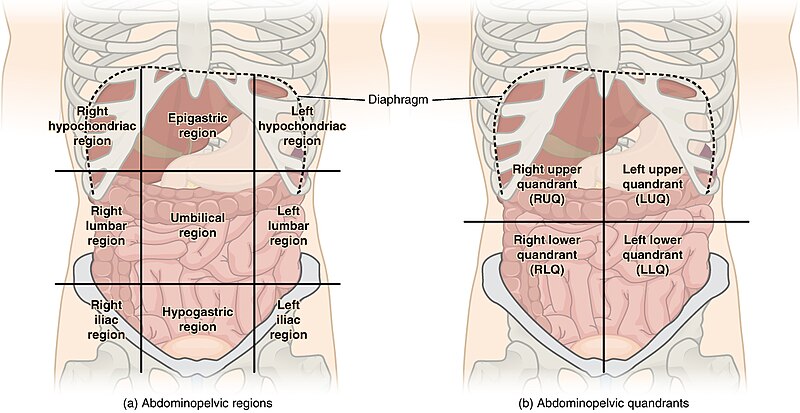 Many people feel as though they are unable to inhale fully and comfortably. Symptoms will worsen if the activity continues.
Many people feel as though they are unable to inhale fully and comfortably. Symptoms will worsen if the activity continues.
If diaphragm pain occurs during exercise, it is best to take a break until the spasms stop. A proper warm-up routine may prevent this type of pain from developing.
4. Gallbladder disease
Gallbladder disease is an umbrella term for several conditions. Pain in the gallbladder can feel similar to diaphragm pain so people may confuse the two.
Other symptoms of gallbladder disease include:
- changes in urinary or bowel habits
- chills or fever
- diarrhea
- nausea
- yellowing of the skin and whites of the eyes (jaundice)
- vomiting
Most cases of gallbladder disease occur as a result of inflammation and irritation of the gallbladder walls (cholecystitis). Other gallbladder problems include gallstones, bile duct blockage, and cancer.
The treatment for gallbladder disease will depend on the exact form of the condition. Options may include medications to manage pain, anti-inflammatory drugs, or surgery to remove the gallbladder.
Options may include medications to manage pain, anti-inflammatory drugs, or surgery to remove the gallbladder.
Lifestyle changes that may prevent or manage gallbladder disease include:
- losing weight slowly and steadily (if overweight)
- managing diabetes and other health conditions
- exercising regularly
- quitting smoking
- limiting alcohol intake
5. Hiatal hernia
Share on PinterestA small hiatal hernia may not cause any noticeable symptoms.
A hiatal hernia occurs when part of the upper stomach pushes through an opening in the bottom of the diaphragm.
The opening (known as the hiatus) allows the esophagus to pass through the diaphragm muscle to connect to the stomach.
Smaller hiatal hernias are not usually cause for concern.
Many people remain unaware that they even have one as they have no symptoms.
However, larger hiatal hernias can cause symptoms such as:
- acid reflux
- black or bloody stools
- chest or stomach pain
- difficulty swallowing
- heartburn
- regurgitation of food into the mouth
- shortness of breath
- vomiting
Medication is the most common treatment to manage hiatal hernias.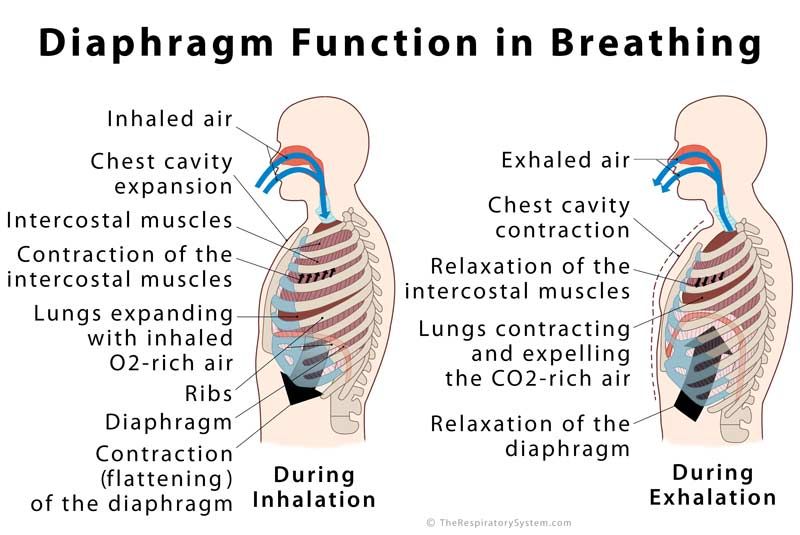 The following lifestyle changes can also help to control symptoms:
The following lifestyle changes can also help to control symptoms:
- eating several small meals rather than three larger ones
- avoiding fatty or acidic foods and other items that trigger heartburn
- eating meals at least 3 hours before bedtime
- quitting smoking
- maintaining a healthy weight
- elevating the head of the bed by 6 inches to prevent acid reflux overnight
If a hiatal hernia is very large or causes severe symptoms, surgery may be necessary.
6. Pregnancy
As a pregnancy progresses, the uterus expands and pushes the diaphragm upward. This action compresses the lungs and makes breathing more difficult. It can also cause mild pain or discomfort and shortness of breath.
These symptoms are no cause for concern and will resolve after giving birth.
However, it is important to consult a doctor if the following symptoms occur:
- intense or constant pain
- a persistent cough
- severe breathing difficulties
7.
 Pleurisy
Pleurisy
Pleurisy refers to inflammation of the pleura, which is the layer of tissue on the inner side of the chest cavity surrounding the lungs.
It causes sharp chest pain when breathing, along with shortness of breath. Pleurisy can, in some cases, also lead to coughing and fever. Pain can sometimes affect the shoulders and back as well.
Treatment involves taking medications to control the pain and to treat the underlying condition. Possible associated conditions that may require treatment include infections, autoimmune disorders, and sickle cell disease.
8. Bronchitis
Bronchitis is the inflammation of the lining of the bronchial tubes, which transport air to and from the lungs. Bronchitis may be acute (short-term) or chronic (long-term).
Bronchitis causes chest pain that people may mistake for diaphragm pain. Other symptoms include:
- chills
- a cough
- fatigue
- fever
- shortness of breath
- thick, colored mucus
Acute bronchitis typically develops from a cold and will go away on its own within a week or so.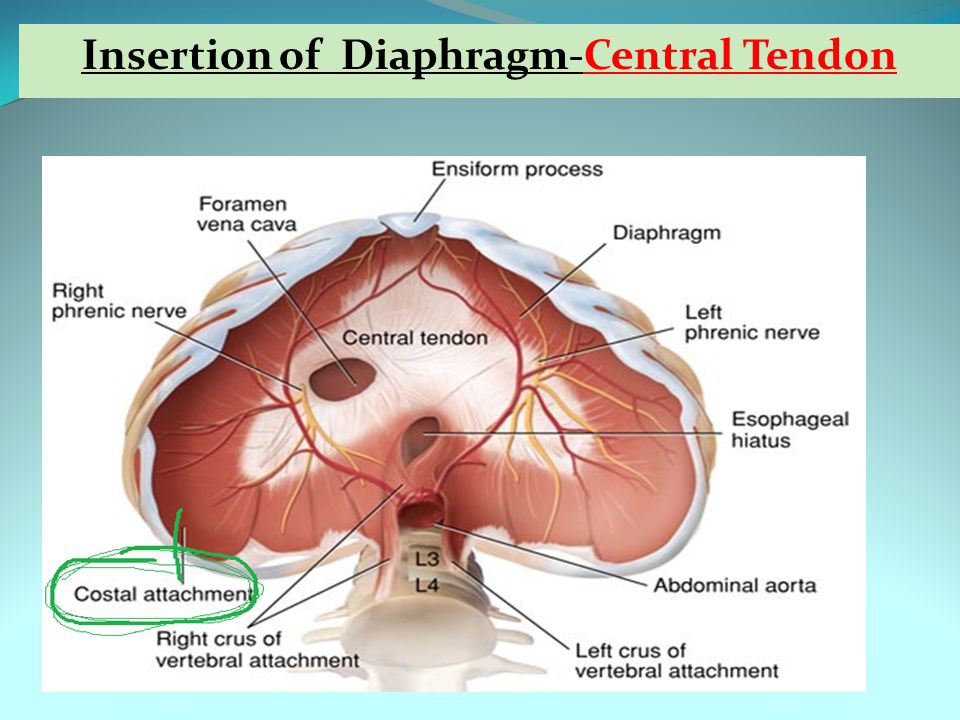 Cough medicine and pain relievers may ease symptoms until the infection clears up.
Cough medicine and pain relievers may ease symptoms until the infection clears up.
Chronic bronchitis requires medical attention. Treatment options include inhalers, anti-inflammatory medications, and pulmonary rehabilitation to help the person breathe more easily.
9. Pneumonia
Share on PinterestPneumonia may cause breathing difficulties and diaphragm pain.
Pneumonia is an infection that causes inflammation of the air sacs in the lungs. The cause may be bacterial, viral, or fungal. Symptoms include:
- breathing difficulties
- chest pain
- chills
- a cough with phlegm or pus
- fever
Some cases of pneumonia can be life-threatening, especially in young children, older adults, and those with other health problems.
Treatment aims to heal the infection and prevent complications. Treatment options include antibiotics, cough medicine, and pain relief. Hospitalization may be necessary in some cases.
10. Other possible causes
Less common causes of diaphragm pain include:
- lupus
- pancreatitis
- nerve damage
Heart surgery or radiation treatments may also cause pain that resembles diaphragm pain.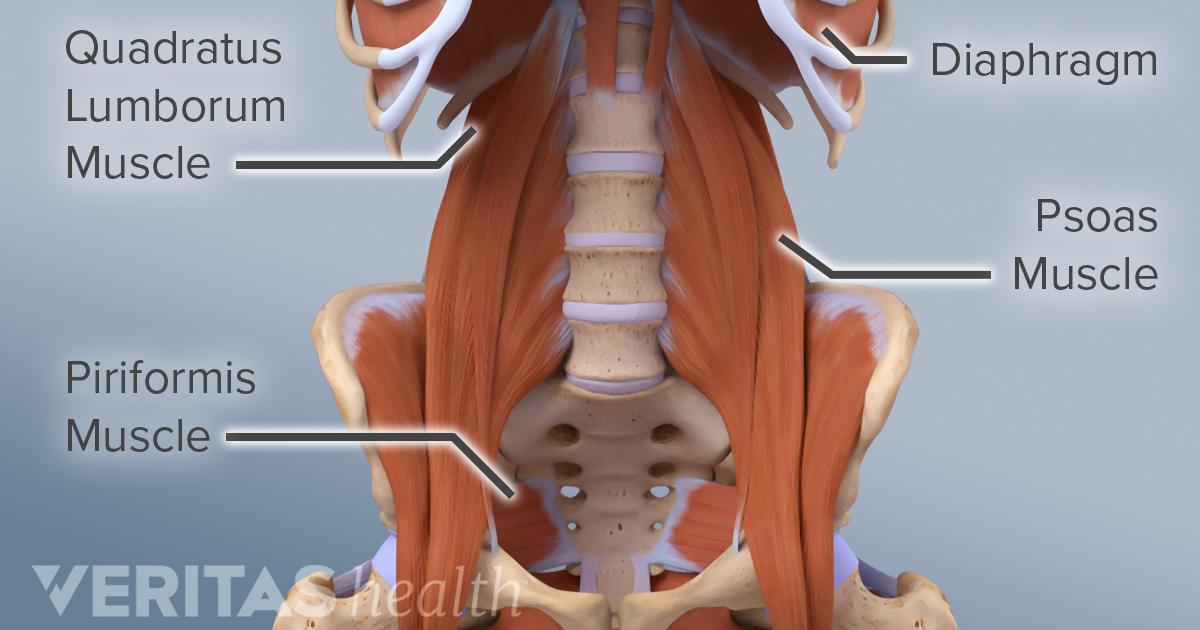
The outlook for people with diaphragm pain depends on the underlying cause of this symptom. Those who experience diaphragm pain from exercise, for example, will get relief once they rest.
People with a ruptured diaphragm may take much longer to recover though. Recovery will depend on the type of trauma and any other injuries that it caused.
People with long-term conditions that cause diaphragm pain, such as chronic bronchitis and most hiatal hernias, can alleviate symptoms using medications, lifestyle changes, and other medical treatments.
Diaphragm spasm: Symptoms, causes, and treatment
Diaphragm spasms feel like twitches in the area between the chest and the abdomen. They can occur with or without pain. Possible causes include an injury, nerve irritation, or rare condition known as van Leeuwenhoek’s disease.
Diaphragm spasms are involuntary contractions of the band of muscle that divides the upper abdomen and chest. In most cases, they do not pose a serious health risk, but they can cause discomfort.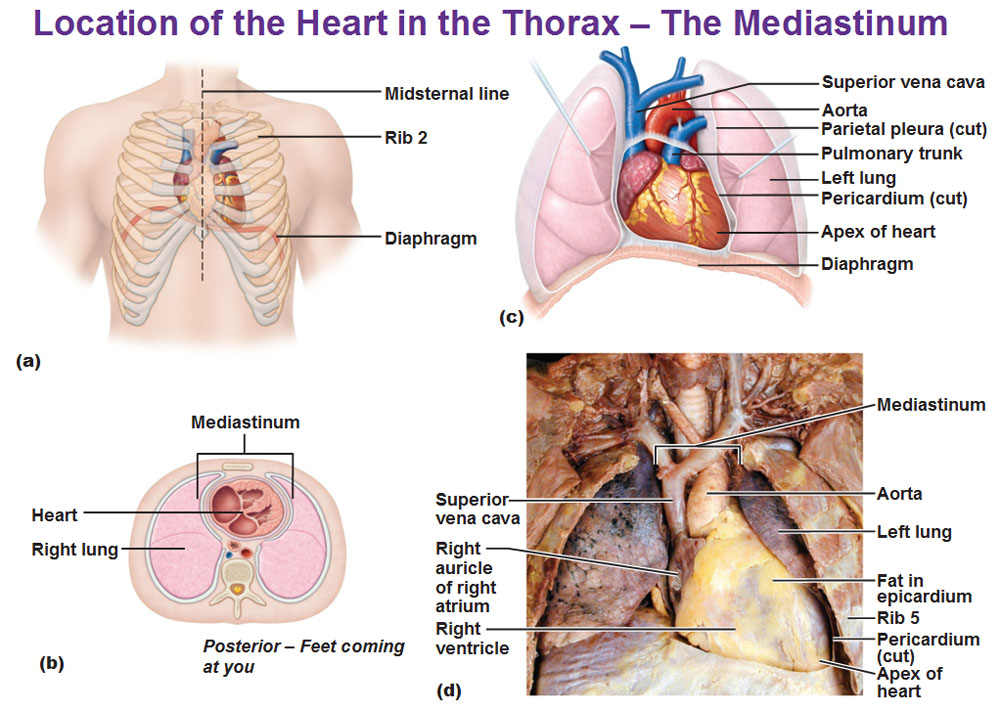
Diaphragm flutter, also known as van Leeuwenhoek’s disease, is a different condition. It is a rare neurological condition in which the muscles of the diaphragm contract rhythmically, causing pain and discomfort.
It is also possible for diaphragm spasms to indicate an underlying health condition. This article will discuss the symptoms, causes, and treatments for diaphragm spasms.
A diaphragm spasm is a sudden, involuntary contraction that can cause pain and tightness in the chest or upper abdominal area. It affects the ways the lungs expand and contract when breathing. It can result from stress, injury, exercise, and other causes.
A diaphragmatic flutter is a specific condition that involves unusual movements in the abdominal wall and breathing difficulty. It is rare and doctors do not yet know why it happens. There is currently no specific treatment.
The diaphragm is a muscle that acts as a partition between the upper abdomen and the chest. It plays a crucial role in the respiratory system by helping a person breathe.
The diaphragm contracts when a person breathes in, allowing the rib cage to expand so that oxygen can flow into the lungs. When they breathe out, it relaxes again to help push carbon dioxide out of the lungs.
The way a person experiences a diaphragm spasm can vary widely, but they may experience:
- chest pain or tightness
- difficulty breathing
- abdominal pain
- heart palpitations
Depending on the cause of the diaphragm spasm, other symptoms may accompany it. These can include:
- hiccups
- back pain
- indigestion
- nausea
- vomiting
- difficulty swallowing
- diaphragm paralysis
- persistent coughing
These symptoms can range from mild to severe, depending on the underlying cause.
Doctors do not know yet what causes diaphragm spasms, but they tend to link with:
- inflammation of the brain, known as encephalitis
- spinal and chest tumors
- spasm in other muscles used for breathing
- stroke
There are several potential causes of a diaphragm spasms.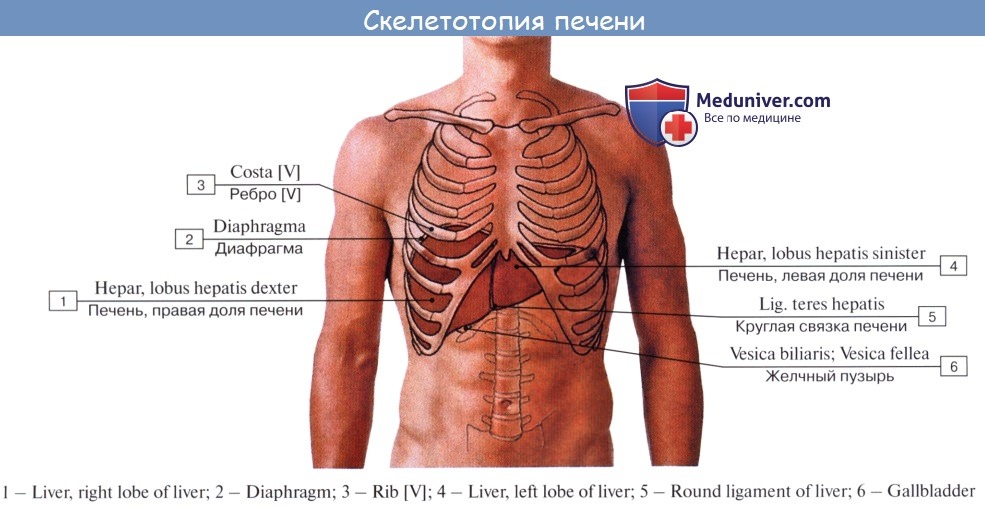
Although the symptoms can be uncomfortable, they will usually pass within a few minutes.
Other possible causes include:
Injury
A sudden physical blow to the abdomen or chest may cause a spasm, for example, during a contact sport such as rugby or boxing.
Stress
Some people find they experience diaphragm spasms with stress, or that stress aggravates them.
Exercise
Exercise can cause a cramp or “stitch” in the abdomen. This may occur when people overexert themselves or have a difficult time performing their warmups. In some cases, the additional pressure from a stitch can trigger a diaphragm spasm.
Hiatal hernia
A hiatal hernia is a condition in which a part of the stomach moves up into the chest. Hiatal hernias occur when age, injury, or recent surgery weakens the muscle tissue in the diaphragm.
When a hiatal hernia occurs, part of the stomach pushes through an enlarged hiatal opening in the diaphragm. This can trigger a diaphragm spasm.
A hernia can be mild or serious, and its severity will determine any additional symptoms. The most severe cases require immediate medical attention as they can injure the stomach, cause bleeding, or interfere with breathing.
Temporary paralysis
A sudden blow to the abdomen can temporarily paralyze the diaphragm. This can lead to significant difficulties in breathing. A person may often panic or feel anxious if they cannot breathe, which can worsen symptoms.
The paralysis will quickly pass, however, and the individual can usually breathe again.
Phrenic nerve irritation
The phrenic nerve controls the movement of the diaphragm muscle. Irritation or injury to this nerve, or any inflammation, can trigger spasms in the diaphragm in addition to causing hiccups and breathing difficulties.
A variety of factors can irritate the phrenic nerve, including:
- simultaneously swallowing and breathing air in
- experiences overeating or eating spicy food
- physical injury
- surgical complications
- cancer
- noncancerous growths
- autoimmune or neurological conditions
- infection
Diaphragmatic flutter
Diaphragmatic flutter, also called van Leeuwenhoek’s disease, is a rare condition that involves rhythmic, involuntary contractions of the diaphragm.
Other symptoms can include:
- abdominal pain
- heart palpitations
- difficulty breathing
- chest pain
They can worsen during the day and with stress.
Doctors do not know yet why it happens, but it can link with:
- inflammation of the brain, which is encephalitis
- stroke
- spinal and chest tumors
There is no standard treatment for diaphragmatic flutter yet, but doctors may try the following:
- antiseizure medications
- antipsychotic medications
- diaphragm pacer stimulation
- phrenic nerve crush, which involves stopping the diaphragm from moving by damaging one of the two main nerves that lead to it
It is possible to mistake the symptoms of diaphragm spasms as those of a gastrointestinal or heart problem, as they are similar. In most cases, symptoms will subside after a few minutes without the need for diagnosis by a doctor.
However, if a person has frequent diaphragm spasms without an apparent cause, it is important for them to get medical advice.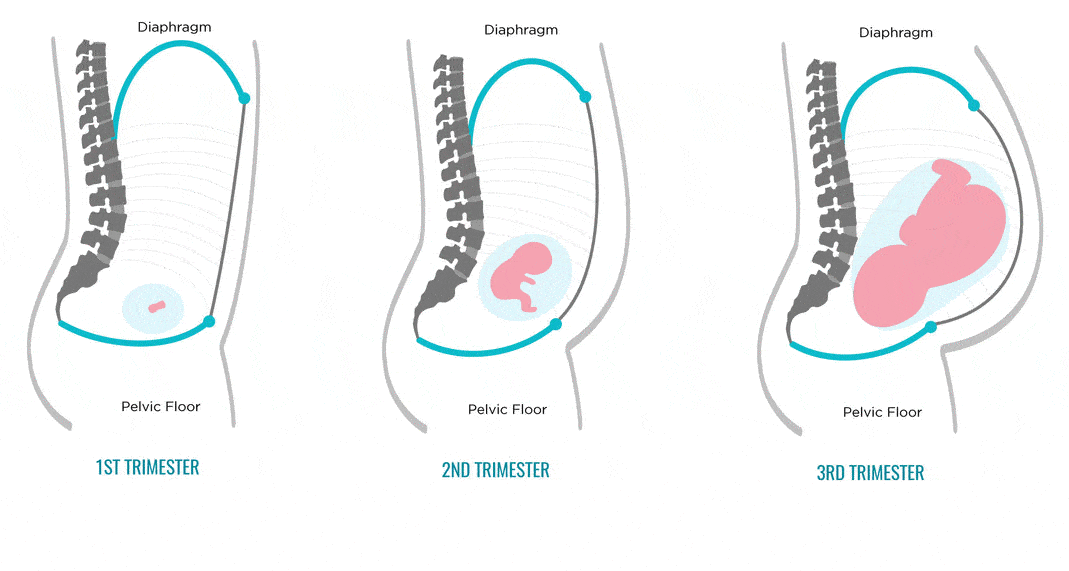
If the doctor suspects that an underlying medical condition causes the spasms, they may use an X-ray, blood test, CT scan, MRI, endoscopy, or manometry to help with the diagnosis.
Treatments for diaphragm spasms vary according to the underlying cause.
Diaphragm spasms resulting from a sudden blow may cause discomfort, but symptoms typically subside within a few minutes, making treatment unnecessary. It is essential to rest and concentrate on maintaining a regular breathing pattern while symptoms persist.
The following causes will require different treatments:
Exercise
Most diaphragm spasms that result from exercise will also go away without treatment. In cases when the spasms are persistent, it can help to stretch or put pressure on the surrounding muscles.
For example, gently pushing into the affected muscle using the fingers can help to relieve discomfort. Holding one hand over the head can also help, as it stretches the chest muscles.
Hiatal hernia
Doctors treat hiatal hernias in different ways, depending on their severity. In cases when symptoms are minimal, it can help to eat smaller, more frequent meals, or to take medication for gastroesophageal reflux disease.
In cases when symptoms are minimal, it can help to eat smaller, more frequent meals, or to take medication for gastroesophageal reflux disease.
Surgery may be necessary in more severe cases, especially if the hernia causes complications.
Phrenic nerve irritation
Treating the cause of the phrenic nerve irritation can be a great way to restore a regular breathing pattern. The cause will determine the treatment plan.
If symptoms are severe, a doctor may recommend one of the following treatments:
- antiseizure medications
- antipsychotic medications
- procedures to try to control the movement of the diaphragm, such as a diaphragm pacer stimulation
- surgery to stop the diaphragm moving, for example, by damaging one of the two main nerves that lead to it
The majority of diaphragm spasms are temporary and can go away within a few minutes. Specific body stretches, medications, and lifestyle changes may help to manage persistent symptoms.
If diaphragm spasms occur due to a health condition that requires medical attention, such as a hiatal hernia, phrenic nerve irritation, or diaphragmatic flutter, a doctor can help make a treatment plan for the individual.
Here are some questions people may ask about spasms and flutters in the diaphragm.
Are stomach spasms the same as diaphragm spasms and flutters?
Stomach spasms relate specifically to the digestive process. They can happen if a person has an infection in their digestive tract, acid reflux, eats spicy food, or has dinner late at night.
A diaphragm spasm occurs in the muscle that lies between the abdomen and the lungs. It can be due to digestive factors, but it may also indicate a lung, heart, muscle, or nerve problem.
A diaphragm flutter is a rare and specific condition. It is different from a spasm.
What are the risk factors for diaphragm spasms?
Doctors do not know exactly why they happen, but some people notice them after exercise, eating certain foods, or with stress. They may be symptoms of a hiatal hernia.
They may be symptoms of a hiatal hernia.
How can I stop diaphragmatic spasms?
It depends on when they happen. If a person experiences them after exercise, doing warmup stretches may help. If spasms occur after spicy food or a large meal, dietary changes may prevent them.
Breathing exercises might also help calm diaphragm muscle spasms. If they are bothersome, a doctor may recommend antiseizure or other medications.
Diaphragm spams and flutters affect a muscle called the diaphragm, which is in the upper abdomen, between the stomach and the lungs.
Diaphragm spasms are muscular spasms that can occur for various reasons, ranging from exercise to digestive problems.
Diaphragmatic flutters refer to rhythmic contractions in the chest area. This is a rare and specific condition that scientists are currently working to understand better.
Anyone with concerns about spasms or flutters in the chest or upper abdomen may want to consider getting medical advice.
Read this article in Spanish.
Diaphragmatic hernia
01/17/2020
Hiatal hernia, also called hiatus hernia or diaphragmatic hernia , is a displacement of part of the stomach through a hole in the diaphragm from the abdomen into the chest. In essence, a hernia of the esophageal opening of the diaphragm is not a hernia in itself.
Full article
ICD code for this disease: K44, K45, K46
your zip code / city
- 085399627685550″ data-lng=”12.102999687194824″ data-state=”43″> 566333200000000″ data-lng=”7.613565000000000″ data-state=”15″>
Show all specialists
Overview of article
- Types of hiatal hernia
- Frequency of hiatal hernia
- Causes and risk factors of hiatal hernia
- Symptoms of diaphragmatic hernia
- Diagnosis of diaphragmatic hernia
- Treatment of diaphragmatic hernia rufous
Diaphragmatic hernia is not actually a hernia per se, The aforementioned opening is natural from the point of view of anatomy and is called Hiatus oesophageus, i.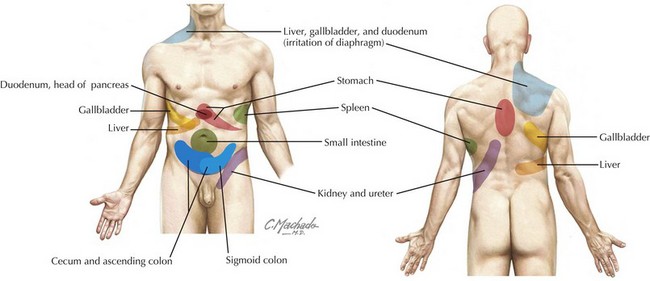 e., the esophageal opening. This is a hole in the diaphragm through which the esophagus enters the stomach, located in the abdominal cavity. Due to the fact that a hiatal hernia, unlike an inguinal hernia and an umbilical hernia, does not protrude from the inside out, it is classified as an internal hernia.
e., the esophageal opening. This is a hole in the diaphragm through which the esophagus enters the stomach, located in the abdominal cavity. Due to the fact that a hiatal hernia, unlike an inguinal hernia and an umbilical hernia, does not protrude from the inside out, it is classified as an internal hernia.
There are three types of hiatal hernia: cardiofundal hernia , axial hernia (sliding hernia) and paraesophageal hiatal hernia . Cardiofundal hernia is a mild form of hiatal hernia. The esophagus enters the stomach at a more obtuse angle, in contrast to the normal acute esophagogastric angle (angle of His), because the ligamentous apparatus that holds the stomach to the diaphragm is weakened. Pain symptoms caused by cardiofundal hernia are extremely rare.
In a paraesophageal hiatal hernia, the part of the stomach adjacent to the esophagus is displaced from the abdominal cavity into the chest through the esophageal opening. This can lead to a narrowing of the stomach and, in extreme cases, to the “thoracic stomach” (eng. Upside-down stomach) , i.e., a total gastric hernia of the esophageal opening of the diaphragm, in which the entire stomach is located above the diaphragm.
This can lead to a narrowing of the stomach and, in extreme cases, to the “thoracic stomach” (eng. Upside-down stomach) , i.e., a total gastric hernia of the esophageal opening of the diaphragm, in which the entire stomach is located above the diaphragm.
In an axial hernia, also called a sliding hernia, the upper part of the stomach is displaced – as in a paraesophageal hernia – through the hiatal opening into the chest. This also disrupts the function of the lower esophageal sphincter and the contents of the stomach can again enter the esophagus. This phenomenon is called reflux disease. Axial hernia occurs in 90% of cases and is the most common form of hiatal hernia.
Hiatal hernia is the most common type of hernia . Men are more susceptible to this disease than women. Thus, after the age of 50, hiatal hernia occurs in men twice as often as in women. In general, the likelihood of a hiatal hernia increases with age.
Diaphragmatic hernia may be congenital or acquired.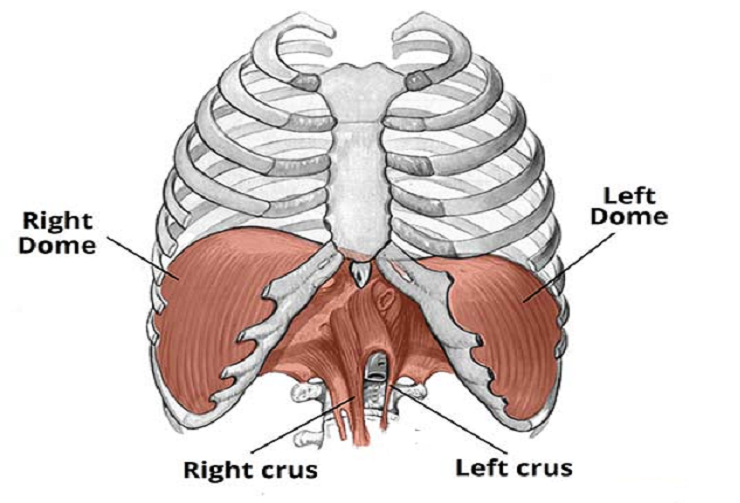 Acquired diaphragmatic hernia occurs due to an increase or expansion of the esophageal opening. Enlargement of this natural opening in the diaphragm occurs as a result of weakening of the muscles of the diaphragm, combined with increased intra-abdominal pressure for a long time. Therefore people who are overweight are at higher risk of developing a hiatal hernia . Further risk factors contributing to the appearance of hiatal hernia include pregnancy , more mature age and male sex. Along with the above, abdominal surgery can also contribute to the appearance of a hiatal hernia.
Acquired diaphragmatic hernia occurs due to an increase or expansion of the esophageal opening. Enlargement of this natural opening in the diaphragm occurs as a result of weakening of the muscles of the diaphragm, combined with increased intra-abdominal pressure for a long time. Therefore people who are overweight are at higher risk of developing a hiatal hernia . Further risk factors contributing to the appearance of hiatal hernia include pregnancy , more mature age and male sex. Along with the above, abdominal surgery can also contribute to the appearance of a hiatal hernia.
Diaphragmatic hernia may occur with some symptoms, or may be asymptomatic. The type of symptoms depends on the type of diaphragmatic hernia. Possible symptoms of a hiatal hernia include, in particular, heartburn, anemia (anemia), a feeling of fullness in the abdomen, belching, difficulty swallowing, and sleep apnea. Further, a hiatal hernia can cause pain in the stomach, in the upper abdomen or in the chest, for example, if part of the stomach is entrapped in the opening of the diaphragm.
In order to diagnose diaphragmatic hernia, the doctor will ask the patient questions about symptoms as part of the history. If the patient reports symptoms such as heartburn, this may indicate the presence of reflux disease and diaphragmatic hernia (hiatus hernia). An accurate diagnosis of diaphragmatic hernia can be made after imaging tests such as gastrointestinal x-ray, esophageal endoscopy, magnetic resonance imaging or computed tomography.
Minor symptoms such as heartburn can usually be treated with medication. If a hiatal hernia negatively affects vital functions such as breathing or if more severe symptoms appear and there is a risk of organ damage, surgical treatment of the hernia (hernioplasty) is necessary. In this case, several methods are at the disposal of specialist surgeons: the so-called fundoplication (according to Nissen-Rosetti or Tupe), gastropexy or fundopexy and chiatoplasty. Fundoplication is the creation of a cuff from the tissues of the stomach in the region of the esophageal-gastric junction, which acts as the lower esophageal sphincter. In a gastropexy (fundopexy), the stomach is returned to its natural position and sutured to the anterior abdominal wall. Chiatoplasty is the closure of the esophageal opening in diaphragm (Hiatus oesophageus) , in other words hernial ring.
In a gastropexy (fundopexy), the stomach is returned to its natural position and sutured to the anterior abdominal wall. Chiatoplasty is the closure of the esophageal opening in diaphragm (Hiatus oesophageus) , in other words hernial ring.
Show all specialists
Breathing exercises | Memorial Sloan Kettering Cancer Center
Share
Time to read:
Approximately 3 min.
This resource describes breathing exercises that will help stretch and strengthen the breathing muscles. Doing these exercises will help you recover faster from infectious diseases that cause breathing problems, such as pneumonia, bronchitis, and COVID-19..
Consult with your healthcare professional if any special precautions are necessary before engaging in any exercise. If mild discomfort turns into pain, contact your healthcare provider.
The diaphragm, chest wall (thorax), and abdominal wall muscles (abdominals) help you breathe.
- The diaphragm is the muscle that separates the chest cavity from the abdominal cavity. On inspiration, it contracts. By taking very deep breaths, you can strengthen this muscle.
- On exhalation, the muscles of the chest and abdominal wall contract, especially when coughing. Intense exhalation through pursed lips (as when blowing out candles) helps to strengthen these muscles.
If you have been diagnosed with COVID-19 or other respiratory infections, do these exercises only when you are alone. Deep, intense breathing releases bacteria and viruses into the air that can infect people nearby.
Cough splitting
Pressing a pillow against your stomach when you cough will help you cough properly and make the process less painful. This is called “splitting” the cough. This technique can be used whenever you need to cough, including when you are doing these exercises (see Figure 1).
Figure 1 Cough splitting
You can do each exercise 3 times a day (morning, afternoon and evening).
Shoulder Rotation
Shoulder Rotation is a good warm-up exercise as it slightly stretches the chest and shoulder muscles.
- Sit comfortably or lie on your back on the bed with your arms relaxed and at your sides.
- Move your shoulders forward, up, back, and down in a circular motion (see Figure 2).
Figure 2. Shoulder rotations
- Repeat 5 times.
Try to make as big a circle as possible and move both shoulders at the same time. If you feel some tightness in your chest, start with smaller circles and increase them as your muscles relax.
Diaphragmatic breathing
This exercise can help relax the chest wall and abdominal muscles.
- Lie on your back or sit in a chair with a back.
- Place one or both hands on your stomach (see Figure 3).
Figure 3. Diaphragmatic breathing
- Inhale slowly and deeply through your nose. The abdomen should rise, but the upper chest should remain still and relaxed.

- Exhale slowly through pursed lips (like blowing out candles). As you exhale, slowly and gently pull your belly towards your spine.
- Repeat 5 times.
Scapular Compression
Scapular Compression is a good way to expand the chest wall and straighten the ribs to take a deeper breath.
- Sit in a chair with a back or lie on your back on a bed.
- Starting position – arms along the body, relaxed, palms pointing up. Gently pull your shoulder blades together and lower them down (see Figure 4). In this case, your chest should stick out like a wheel.
Figure 4. Vane Compression
- Inhale through your nose and exhale through pursed lips (like blowing out candles).
- Rest 1-2 seconds and repeat the exercise 5 times.
Chest stretch with arms above head.
The overhead chest stretch is great for relaxing the chest muscles and allowing air to move in and out of the lungs. It helps to increase oxygen levels throughout the body.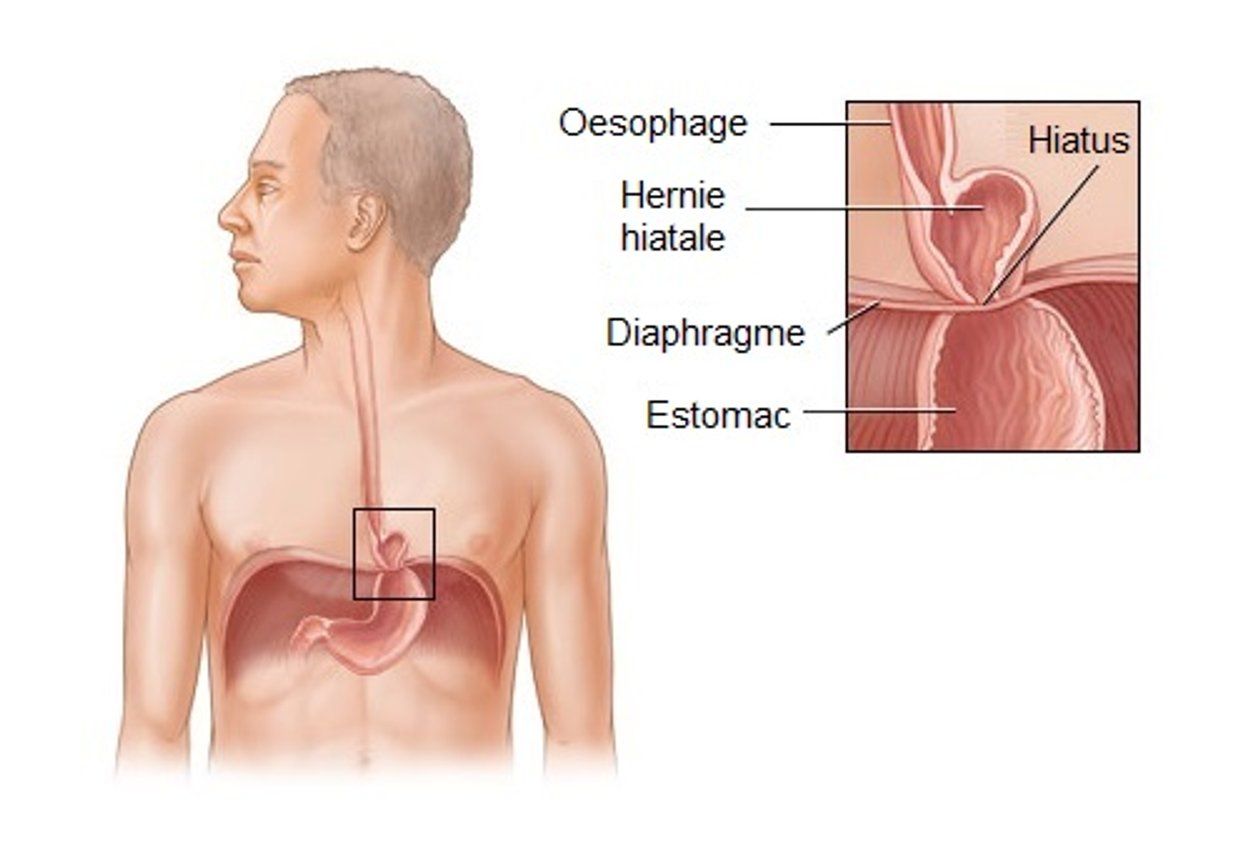
- Sit in a chair with a back or lie on your back on a bed.
- Gently pull your shoulder blades together and lower them down.
- Clasp your hands and slowly raise your arms above your head as high as you can while inhaling deeply (see Figure 5).
Figure 5. Stretching the chest muscles with arms above the head.
- Exhale as you slowly lower your arms.
- Rest 1-2 seconds and repeat the exercise 5 times.
Rapid Nose Breathing
This exercise can help strengthen the diaphragm and inhale more air.
- Sit in a chair with a back or lie on your back on a bed.
- Take a deep breath in through your nose, then quickly inhale through your nose at least 3 more times (without exhaling) (see Figure 6).
Figure 6 Rapid nasal breathing
- Exhale slowly through pursed lips (like blowing out candles).
- Rest 1-2 seconds and repeat the exercise 3 times.
Deep Breathing 4-8-8
This exercise increases the level of oxygen throughout the body.

